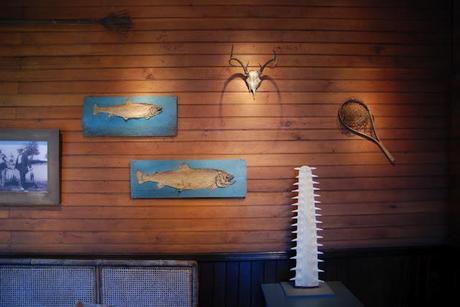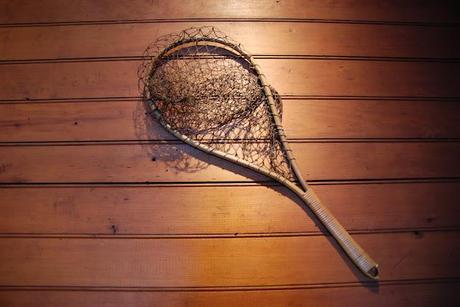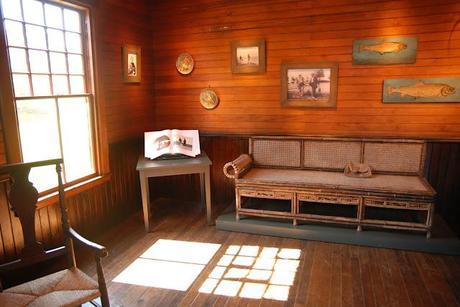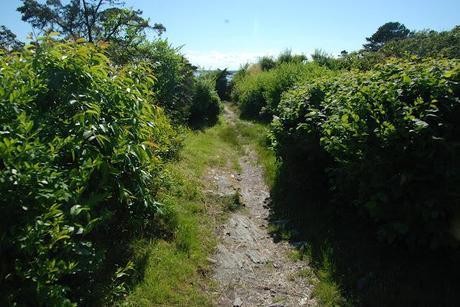

One of the benefits of having a journalist for a mother is that sometimes she takes me along to the cool things she gets to do. One such cool thing (an understatement in this case) involved visiting the newly restored, soon-to-be-open studio in which Winslow Homer painted and lived (check out her article on the studio in the September issue of Down East!). The Portland Museum of Art bought the studio from Charles Homer Willauer, the great grand-nephew of Winslow, in 2006, and since then they have been restoring it to how it looked when the great painter himself worked there (MUCH more after the jump!)
Prouts Neck is one of the many fingers of land that jut out from the Southern coast of the state. In the 1870s, Homer’s family bought land there and developed it as a summer community. The studio sits in the center of the still-thriving summer enclave, and was, before Homer took it over, the carriage house behind his brother’s home.
Homer had the structure moved and converted into a studio and living quarters. While he cultivated the image of a hermit living and working on a distant shore who never interacted with the outside world, he only had the building moved about three-hundred feet to the left. His desire for a truth other than the one he lived reminds me a bit of Henry David Thoreau, who lived in the woods by Walden Pond but went home at least once a week to have his mom do his laundry.
Evidence of Homer’s attempts at isolation abound in the studio, from the sign that he painted and put outside that said “Snakes! Snakes! And mice!” to deter female visitors while he worked, to the porch facing the sea whose floorboards he wore through with his pacing back and forth. My mother writes about paintings better than I, but in Homer’s seascapes, he eliminates the island that sits off of Prouts Neck and presents the viewer with a wild, open sea.
Today we all create our own image, whether consciously or not, in our online presence. Through Facebook, Twitter, Instagram, and all the other sites where we share bits of our lives, we build a narrative. Homer beat us to the punch by about 150 years. He built his image through his work. He cultivated an American image of a self-reliant man, of an eccentric artist who needed nothing but his work and his solitude. In reality, he probably enjoyed being surrounded by his family—why else would he have built a studio so close to them? He just decided to leave that part out of his paintings.
The Portland Museum of Art did a beautiful job restoring the building, and will be offering tours of Homer’s studio beginning September 25th. They’re also holding an exhibit of 35 of Homer’s paintings that he made there at the studio from September 22nd to December 30th, and I seriously recommend you make the trip up (or down, depending where you’re reading this from) to see both. Because it’s a physical link to the artist and his mind to see the actual place Homer painted pictures of, to be in the space where he did so, and to see the pictures themselves.
Now, the studio:



Homer's fishing bag.

I love this wall.

Photos of his family.

A fish he dried and stuck to a board he had painted.

Fishing net.


The "Snakes! Snakes! and Mice!" sign.

Not a bad view. Looks like a painting, doesn't it?

Amurica.

Beautiful skull.


Engravings Homer made for Harper's Weekly.

His pipe!

The sign again.


Porch shadows.

Homer's view.

Outside.



We walked down to the shore to see the actual rocks he painted. So, so cool.





